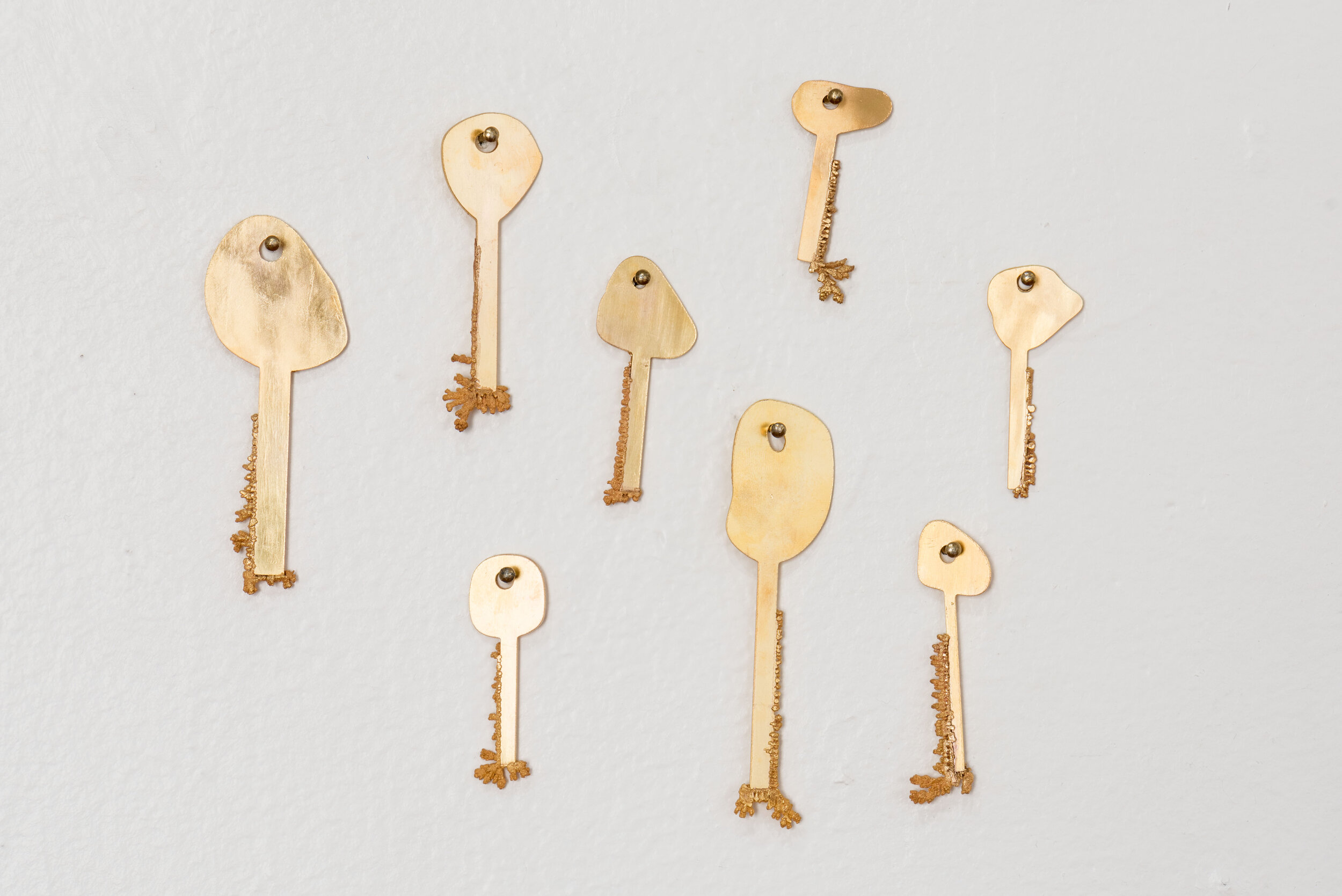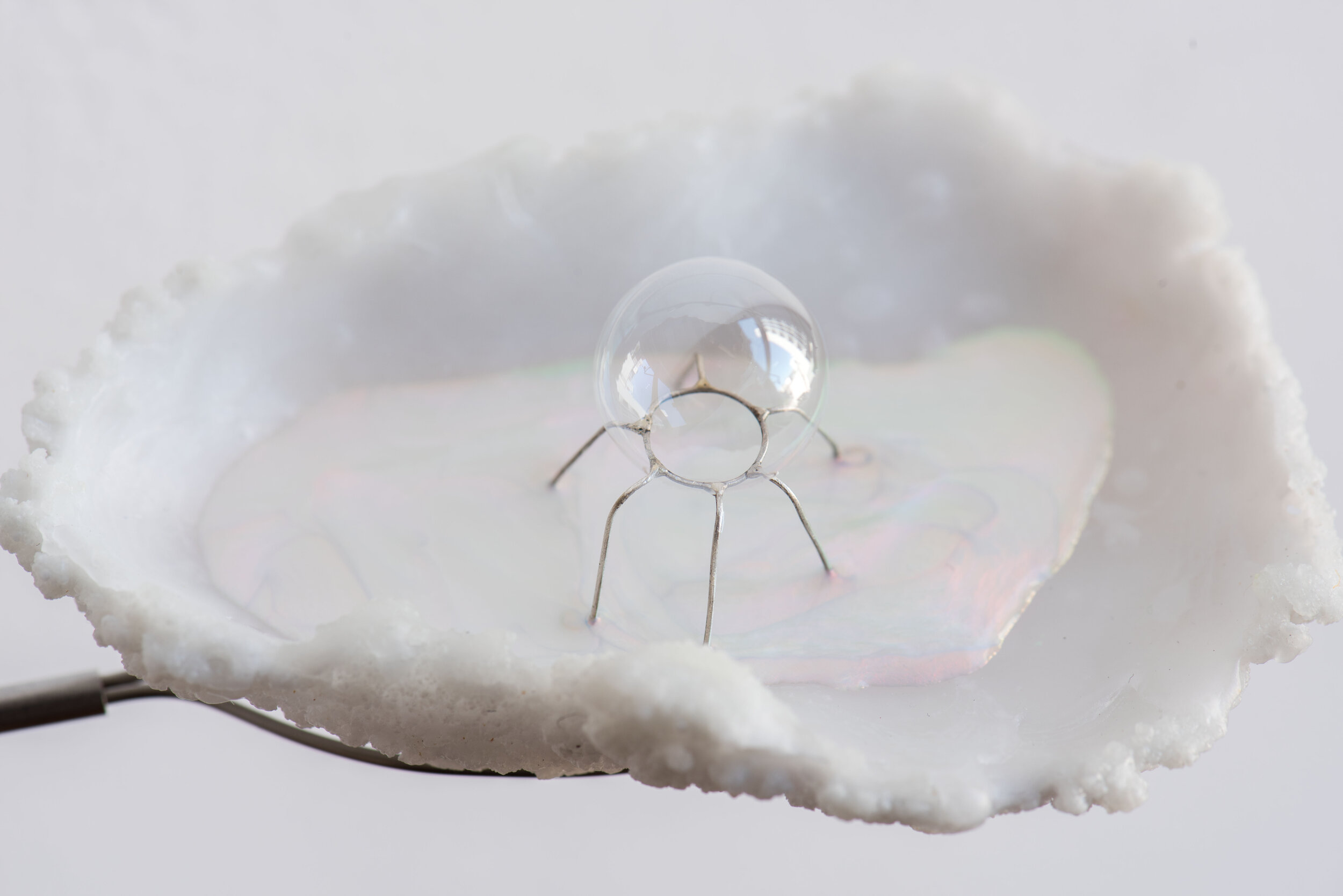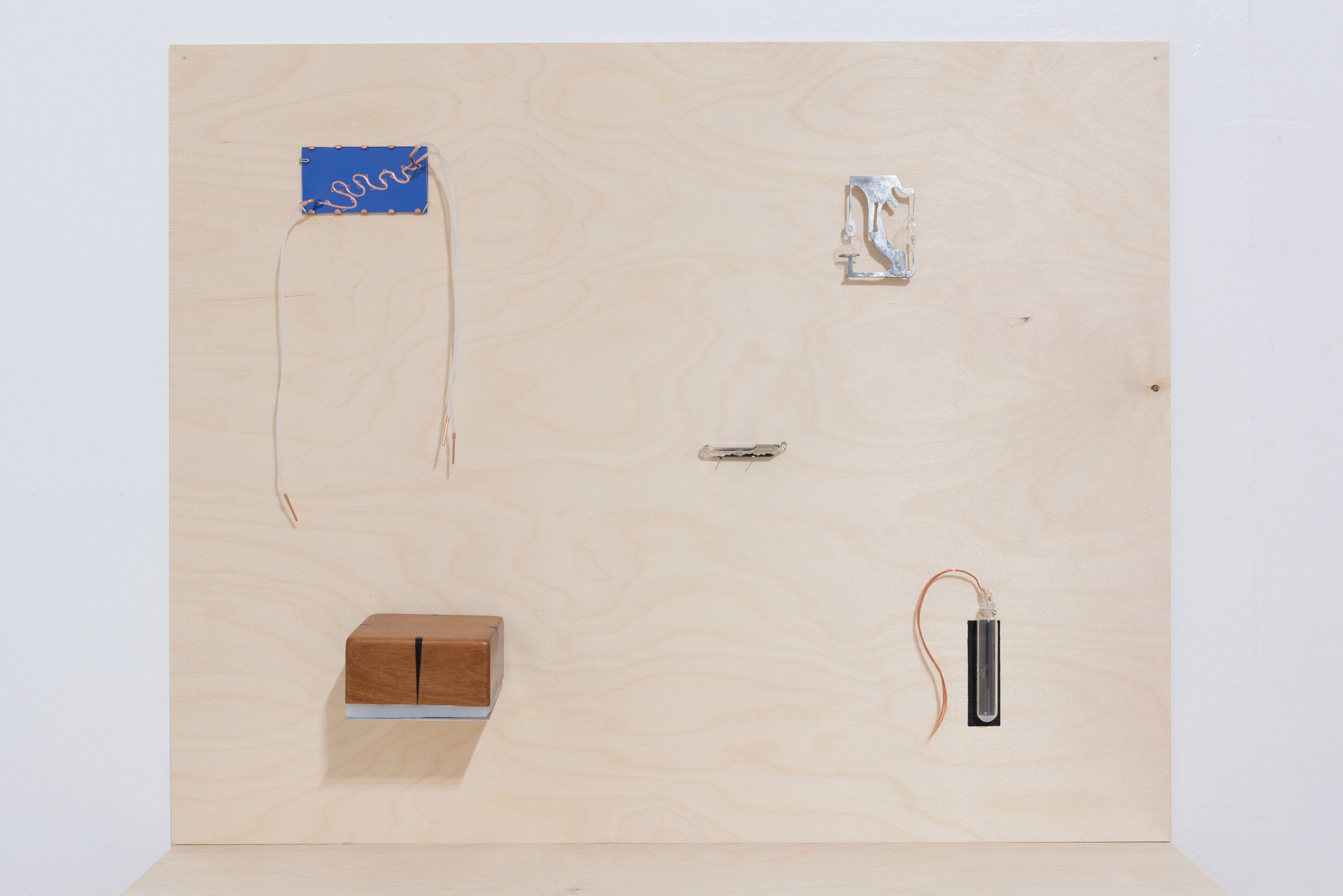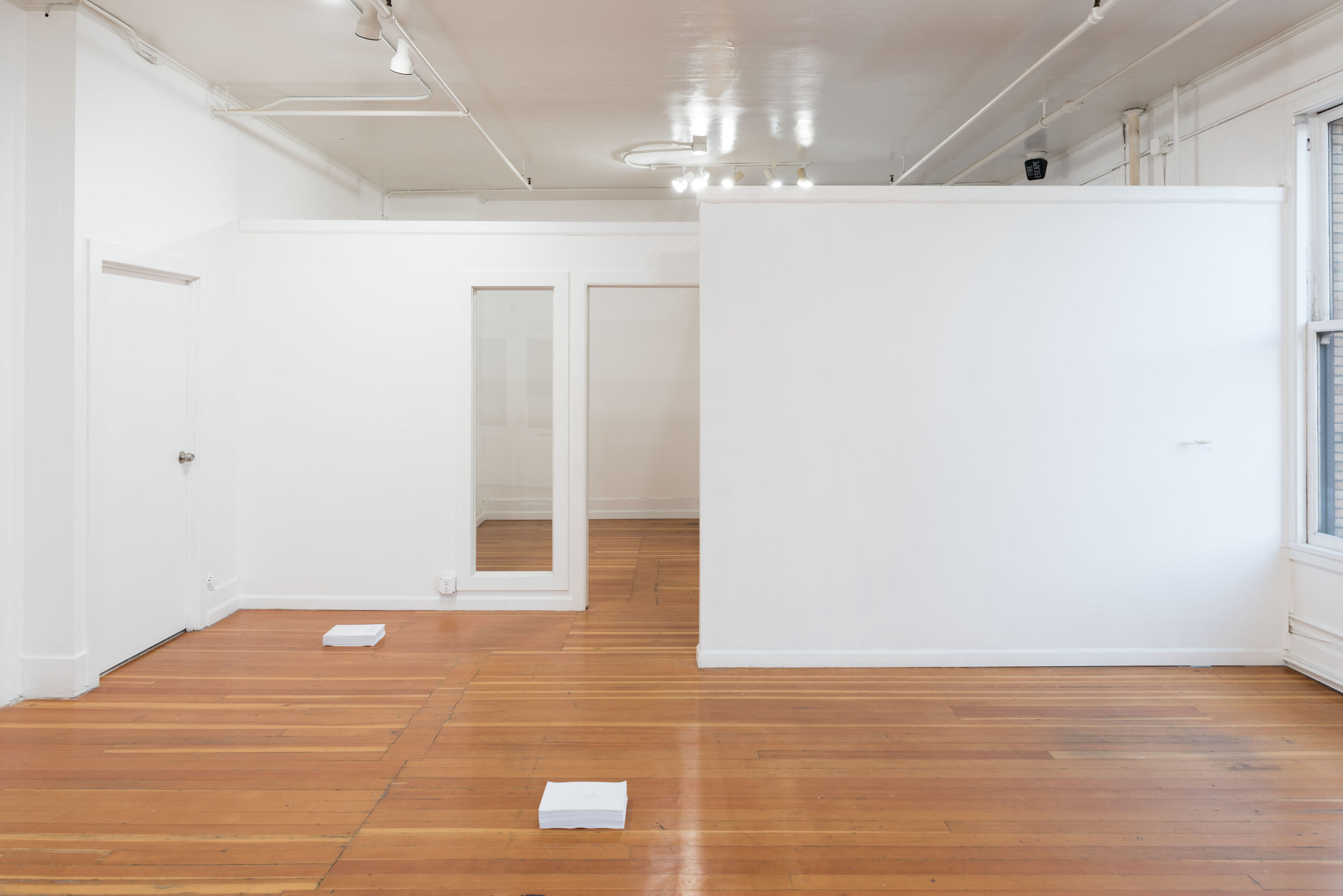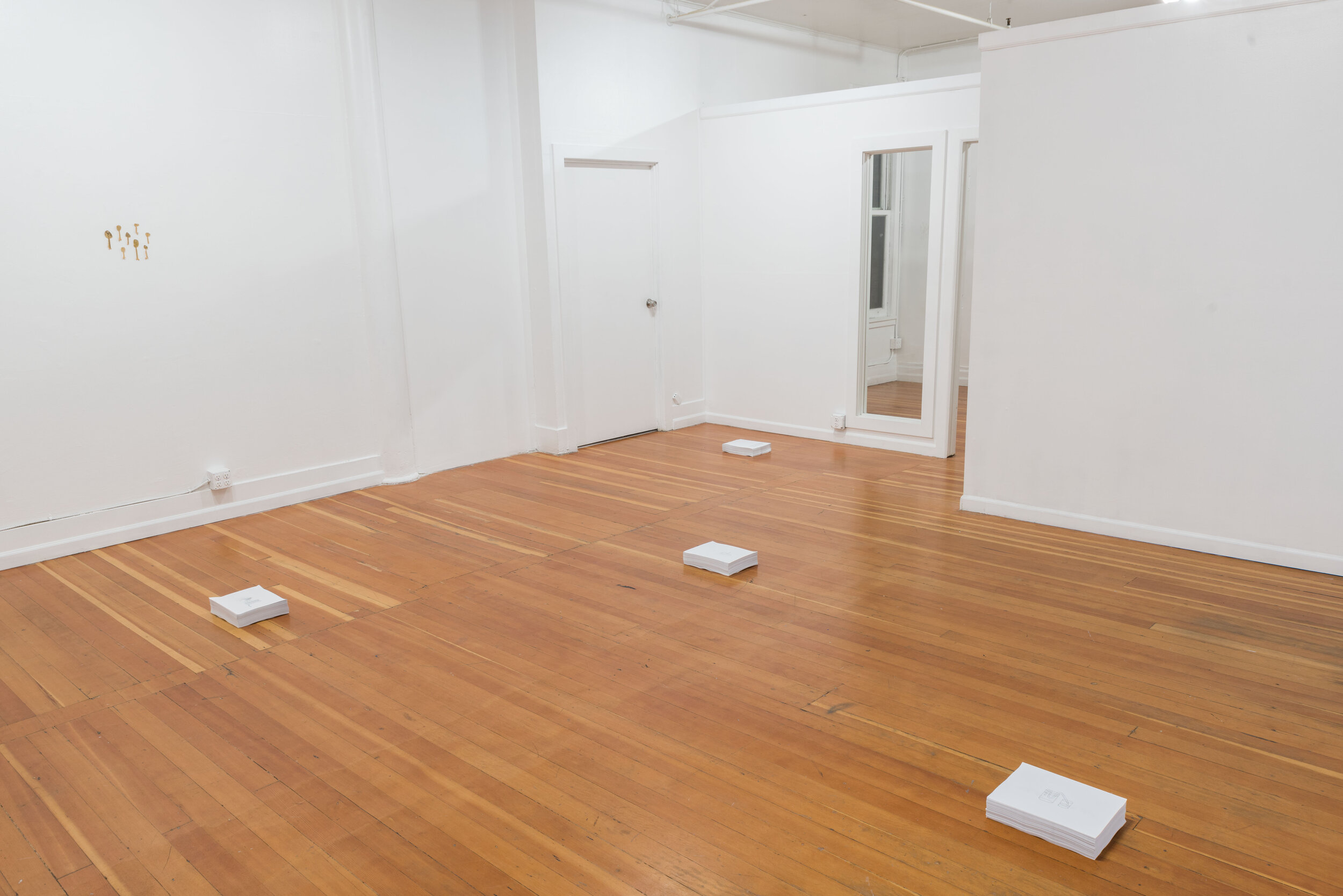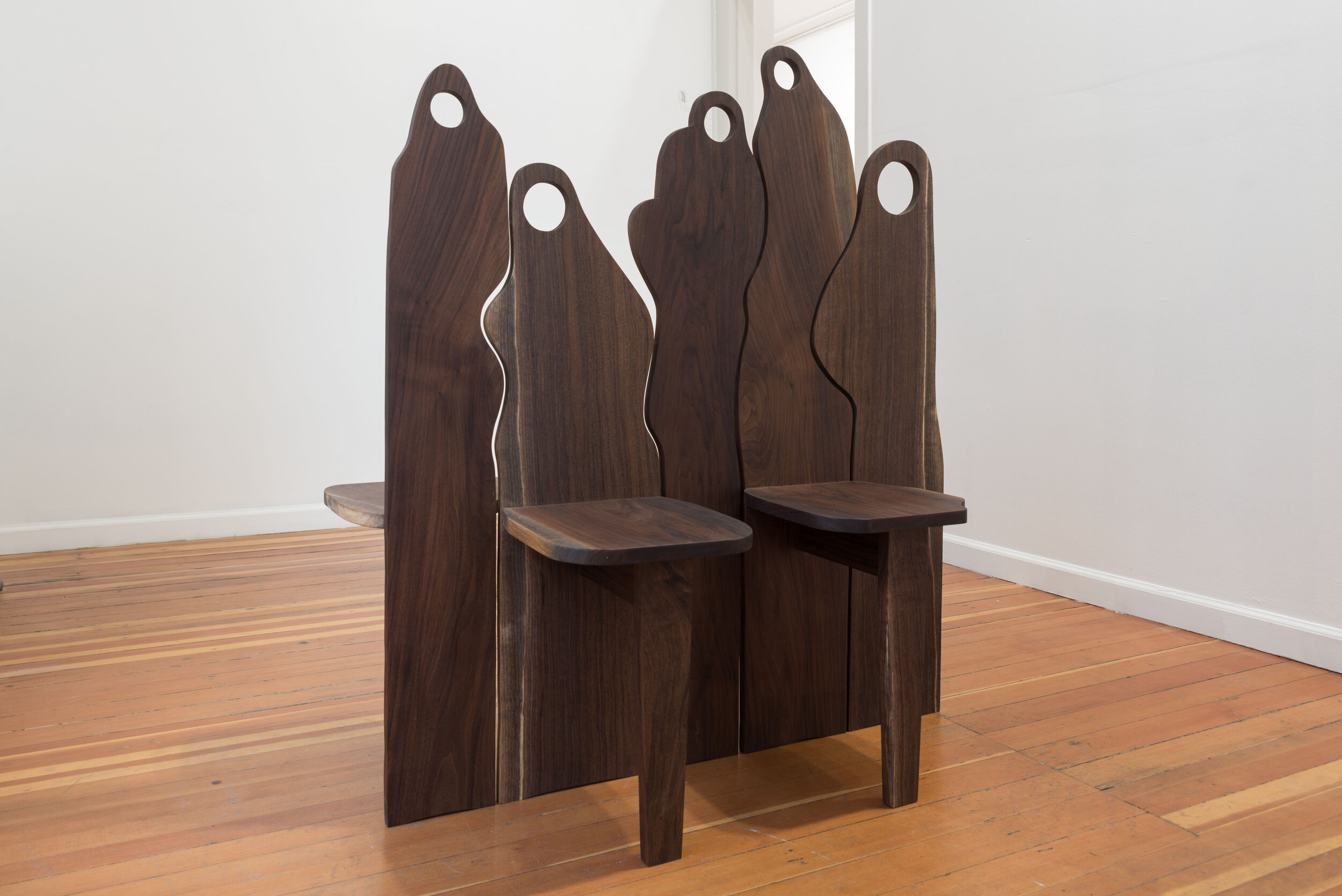Mostly Water
Stephanie Simek
@
Melanie Flood Projects
420 SW Washington St., #301
Portland, Ore 97204
Review by Lisa Radon
In the front room of Stephanie Simek’s Mostly Water at Melanie Flood Projects, eight gold biomorphic-headed “Keys (for Future Lock)” are hung on nails. In place of the usual cut teeth are delicate crystals.
Projecting from the far wall is “Ripple in,” a palm-sized shell form holding a tiny silver spidery structure cradling what looks like a soap bubble and floating on an iridescent puddle as if it were a robot water strider. This is one of several intriguing moments in the show when one is compelled to ask what the hell is the material of this marble-sized iridescent soap bubble? What is going on here? And it gets weirder when one finds out that the “shell” is crystal regrown from the calcium acetate of dissolved pearls and that Simek grew the crystals on copper key blanks via an electrochemical process where material is pulled from a sacrificial piece of copper and deposited onto the blank.
A part of the artist’s statement reads:
Consider a river as a system, always and at every moment remaking itself, redrawing its path, oscillating between banks. Consider the processes by which its path is remade, the erosion of one bank and the deposition of material on the other. The meander is a result of the push and pull between these two processes, driven by the force of the water that runs through it, carving, dissolving, carrying, depositing. The meander, thus, is a hydro-geological drawing expressing a kind of dynamic equilibrium, continuous flux and flow with change as the only constant. … In this constant change state, with its endless and multivalent oscillations, there are tipping points, each as fragile and ephemeral as a bubble.
In a second room of the gallery, there is what looks like a refined work bench with one leg ending delicately in a cat’s whisker diode, a slim metal cone touching a piece of pyrite that in another life would be a tuner for a DIY radio. Mounted to the back of the bench are five “tools,” including a finger-sized glass spirit level that also has a tiny agate and some sand inside; and a glass tube topped with a small plume of tiny copper hairs. The tube, coated inside with liquid crystal is a temperature sensor calibrated to change color at 70 degrees Fahrenheit. There is also an intricate cut metal plate object resembling a baroque multitool card that holds two more of the fragile bubbles on tiny paddles. “valve” is a winding copper path on a blue acrylic plate that terminates in copper tipped silicon tubes. “repeater” is a silicon stamp whose winding grooves are aligned such that it could be used to draw an endless meander path.
On the floor of the front room there are four stacks of printed diagram-like drawings collectively called “selected notes.” One looks like an anatomical drawing of the insides of an ear, tubes and all; another a straw siphon and a couple of glasses; a third is a diagram of an ear of corn with each kernel attached by a line to a node on a box. It turns out that the prints are double sided, meant to the pages of an uncollated future book. And that they reflect research into what Simek refers to as “structural anomalies in systems, workarounds or loopholes.”
In past, Simek has grown bioluminescent algae to illuminate a piece, engineered a room-sized crystal radio, an invisibility cloak, a spacesuit indicator badge, and built an observatory tower in rural Vermont. Simek’s interest in systems and their workings, her materials research, research into chemical processes, immersion in the robust DIY engineering YouTube culture add up to what she talks about as open experimentation, not concerned with the hypothesis and the scientific method, but with open ended wonder and wander and figuring, out which is where science as a branch of (but not distinguished from) natural philosophy, began, and where engineering thrives.
A research-based art practice can be many things, including field research, collaboration with scientists, and historical and sociological research. I remember a funny Liam Gillick quote dismissing much of artists research work which I will gleefully misquote from memory here: “That’s not research, that’s reading.”
Simek’s practice might be framed as an extended essay to encompass the full scope of the etymology of the word as assay, weighing or ascertaining, as analyzing, as essayer, to try, from the Old French essai ‘trial’. It is an essay on systems and their making and unmaking and making. Simek reports out on her research through exquisite objects that capture a facet or two of a jewel’s worth of study and experimentation.
In a time of melting glaciers and rising seas, water’s role as shaper of things is more sharply defined than ever, and our relationship with water is ever more fraught. In the chaotic, dystopic world of Octavia Butler’s Parable of the Sower, the protagonist, Lauren, says, “The only lasting truth Is Change,” going on to create a religion, Earthseed, around her corollary, “God Is Change.”
Simek’s wide-ranging experimentation, thinking about tipping points, about destruction (of a bank via erosion) as a creative force in the construction of a river’s path, about human beings’ relationship to water—where it is and isn’t, its state (vapor, liquid, ice), its availability for sustaining life—could not be any more urgent.
I had imagined the title, Mostly Water, giving the exhibition an overtly humanist frame, as what are we but mostly water, and then some other carbon-based stuff, and a mind. But Simek had apparently been doing a great deal of research on jellyfish because she’s interested in regeneration, and she was struck that over and over again that they are described as being “98% water,” and she wanted to know, became fixated on: well what about the other 2%? The 2% that makes a living being that can live forever, continually regenerating itself?
In another small room of the gallery, what are we to make of a set of six heavy walnut chairs whose backs—wavy, amorphous forms—nest into one another, interlocking like a puzzle? Titled, “step ups,” each has a circular hole cut high through the chair back. It is not until one sees the tiny wall drawing of two robed figures walking down a winding path that the chair backs also take on the form of robed figures.
I asked Simek about the wall drawing and the forms of her anthropomorphic puzzle chairs and found they are derived from a painting: The Life of St. Bernard of Clairvaux by Jorg Breu the Elder depicting Cistercian monks.
“Right before fall of Roman Empire the Cistercians had retreated from society, become self sufficient,” she said. “They lived near water, developed hydromechanical mechanisms used in agriculture and to make pulp easily, to make textiles, to weave…I thought about the evolution from the jacquard loom to the computer. It’s the shape of how things evolved with the monks as tipping point. It’s just a seed. For what comes next.”

